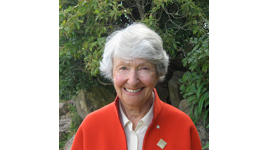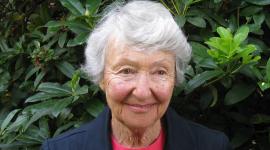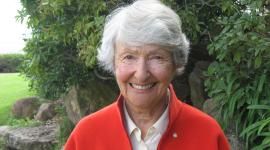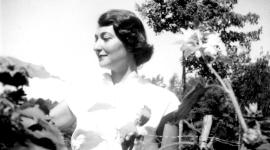Cornelia Hahn Oberlander Biography
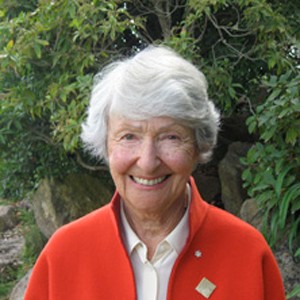
Cornelia Hahn Oberlander was born in Muelheim-Ruhr, Germany, in 1921. Her father died while she was still a child and her mother, a trained horticulturist, brought Cornelia and her sister to New York, later moving the family to a 200-acre farm in New Hampshire.
Oberlander attended Smith College in the early 1940s, attracted to its interdepartmental program in architecture and landscape architecture. She was strongly influenced by faculty member Kate Ries Koch, who taught at Smith from 1919 to 1952. From Koch, Oberlander learned that landscape architecture was not just about gardens. A paper she wrote on Pierre Charles L’Enfant’s plan for Washington, DC, further demonstrated for her the scope of her profession and introduced her to issues of historic landscape preservation.
After gaining her diploma from Smith, Oberlander attended the Harvard University Graduate School of Design, graduating with a B.L.A. in 1947. By the time Oberlander arrived, Walter Gropius and Marcel Breuer were well established in the Architecture Department. Christopher Tunnard was teaching 'Modern Landscape Architecture.' The program encouraged collaboration across disciplines, which later would become an Oberlander trademark.
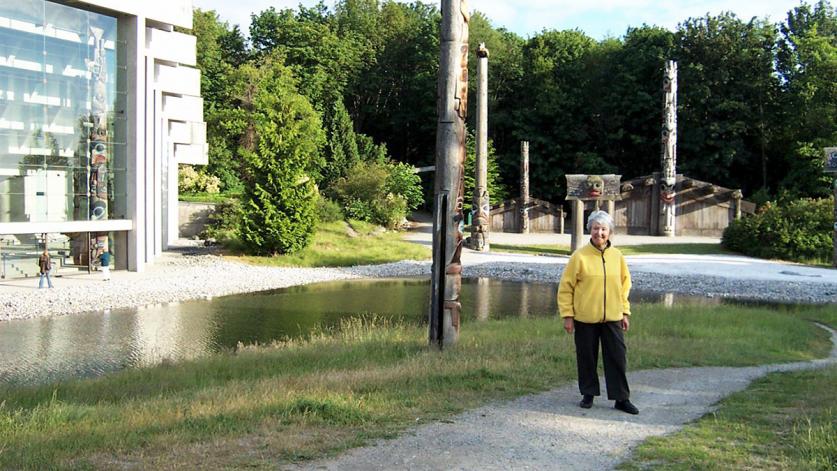
Following her graduation from Harvard, Oberlander worked briefly for landscape architect James C. Rose. From 1949 until 1950 she was at the Regional Plan Association in New York City. By 1951, Oberlander moved to Philadelphia to serve as Community Planner for the Citizens’ Council on City Planning. Noted architect Oskar Stonorov enlisted her for his Schuylkill Falls public housing project (1952-1955), with Dan Kiley as senior landscape architect. She also worked with Kiley and architect Louis Kahn on Philadelphia’s Mill Creek Housing Project. During these years, she established and confirmed her central ethic of the social responsibility of the landscape architect; over time, she would extend this ethic to include site ecology. She did not rely on a “style” of design, but rather followed a process that allowed a unique solution for each project, from conception to installation. She learned to exert control over projects by developing careful details and specifications and actively engaging in the implementation and installation process.
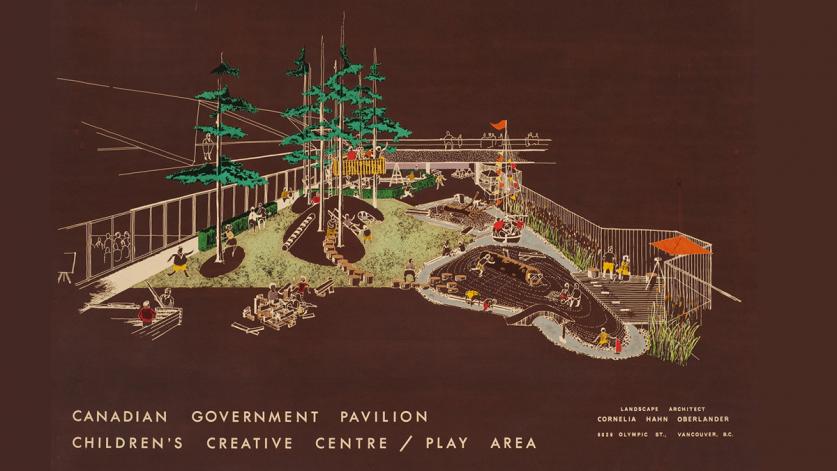
In 1953 Oberlander moved to Vancouver, British Columbia, with her husband, architect and city planner H. Peter Oberlander. One of Oberlander’s early Canadian works was the landscape for the University of British Columbia faculty club (1956-1958) designed with architect Frederick Lassarre. She continued to collaborate on projects in the United States, including a playground at 18th and Bigler Streets in Philadelphia, the Philadelphia International Airport landscape, and the Cherokee Apartments landscape and site design.
Invited to participate in the Expo’67 in Montreal, she designed the Children’s Creative Center, which served 30,000 children. She eventually designed some 70 playgrounds in Canada and worked toward the establishment of a national Task Force on Play.
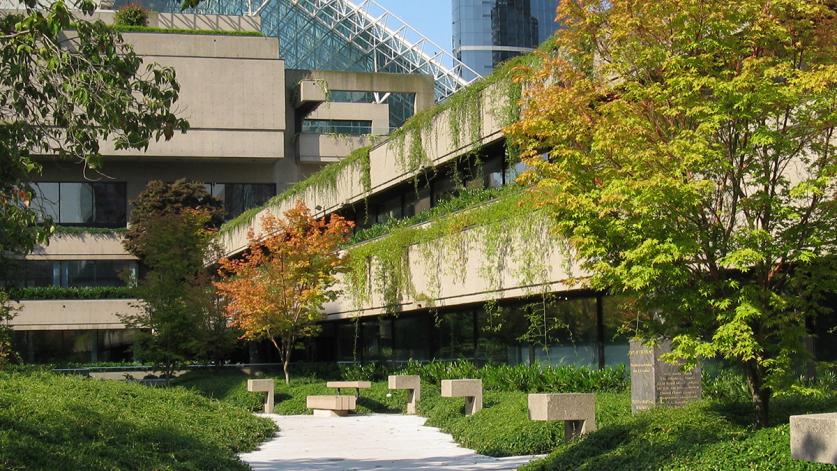
Robson Square, a Provincial Government center and Courthouse complex (1974-1979) in Vancouver, was designed by architect Arthur Erickson, with whom Oberlander collaborated to create the three-block-long roof garden. Oberlander also designed the landscape of the University of British Columbia’s Museum of Anthropology (1975-1977) with Erickson, designing the landscape as an outdoor museum and specifying native vegetation based on ethnographic research.
For the National Gallery of Canada in Ottawa (1984-1989), with Parkin/Safdie Architects, Oberlander based her vision for the site on the painting Terre Sauvage by A. Y. Jackson, a member of the Group of Seven. She used it as a conceptual starting point from which to interpret Canada’s northern “taiga” landscape. Other seminal projects include the landscape for the Ottawa City Hall with Moshe Safdie (1989-1994) and the design of a roof garden for Library Square in Vancouver (1992-1995) with Safdie and Associates/Downs Archambault and Partners.
Working with Rolland/Towers, Oberlander created the 1995-1997 master plan of her alma mater, Smith College, in Northampton, Massachusetts, a plan based upon work done by Frederick Law Olmsted, Sr., in 1892.
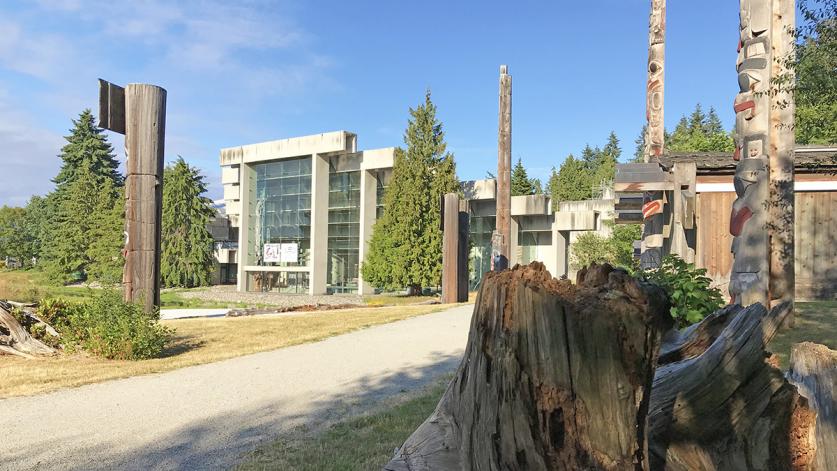
Her more recent designs include the courtyard and roof garden for the New York Times Building in New York City, with H. M. White Site Architects and Architect Renzo Piano; the Canadian Embassy in Berlin, with Kuwabara Payne McKenna Blumberg Architects; the landscape for the Waterfall Building in Vancouver, with Erickson and Nick Milkovich Architects; and the Jim Everett Memorial Park on University of British Columbia Endowment Lands. The American Institute of Architects cited the C.K. Choi Building-Institute for Asian Research, a project that Oberlander completed with Matsuzaki Architects at the University of British Columbia, as one North America’s best examples of environmentally responsible design.
Oberlander is considered by many to be the “Dean of Canadian Landscape Architects” and has done much to bring world-class landscape design to western Canada. For her life’s work and contributions to the profession of landscape architecture, Oberlander has been named a Fellow of both the Canadian and the American Societies of Landscape Architects and has received honorary doctoral degrees from the University of British Columbia (1991), Ryerson Polytechnic University (1999), Simon Fraser University (2002), and Smith College (2003). Oberlander served as president of the Canadian Society of Landscape Architects from 1986 to 1987. In addition to her many published articles, she recently co-authored, with Elisabeth Whitelaw and Eva Matsuzaki, an Introductory Manual for Greening Roofs for Public Works and Government Services Canada.
Oberlander is an honorary member of the Architectural Institute of British Columbia. The Canadian Centre for Architecture held an exhibition Cornelia Hahn Oberlander: Ecological Landscapes in 2006, which featured material from the Cornelia Hahn Oberlander Archive at the Canadian Centre for Architecture and photographs by Etta Gerdes. She was included in Chatelaine Magazine's Women of the year: 30 Canadians who rocked 2015 listing. Alongside Phyllis Lambert, Blanche Lemco van Ginkel and Denise Scott Brown, she is one of four prominent female architects profiled in the 2018 documentary film City Dreamers.
In 2019 Oberlander was announced as the namesake of the Cornelia Hahn Oberlander International Landscape Architecture Prize, which was created by The Cultural Landscape Foundation. Oberlander passed away on May 22, 2021 in Vancouver, B.C.
Awards
Bibliography
Herrington, Susan. Cornelia Hahn Oberlander: Making the Modern Landscape. 2013: University of Virginia Press.
Leccese, Michael. “Canadian Modern,” Landscape Architecture Magazine, Vol. 79, no. 10, December 1989, pp. 64-69.
Moorehead, Steven, and Gordon Grice, eds. “Cornelia Hahn Oberlander,” Landscape Architecture. Gloucester, MA: Rockport Publishers, Inc., 1997, pp. 164-169.
Preston, Brian. “An Affinity for Natural Beauty,” Imperial Oil Review, Vol., 78, no. 413, summer 1994, pp. 18-21.




